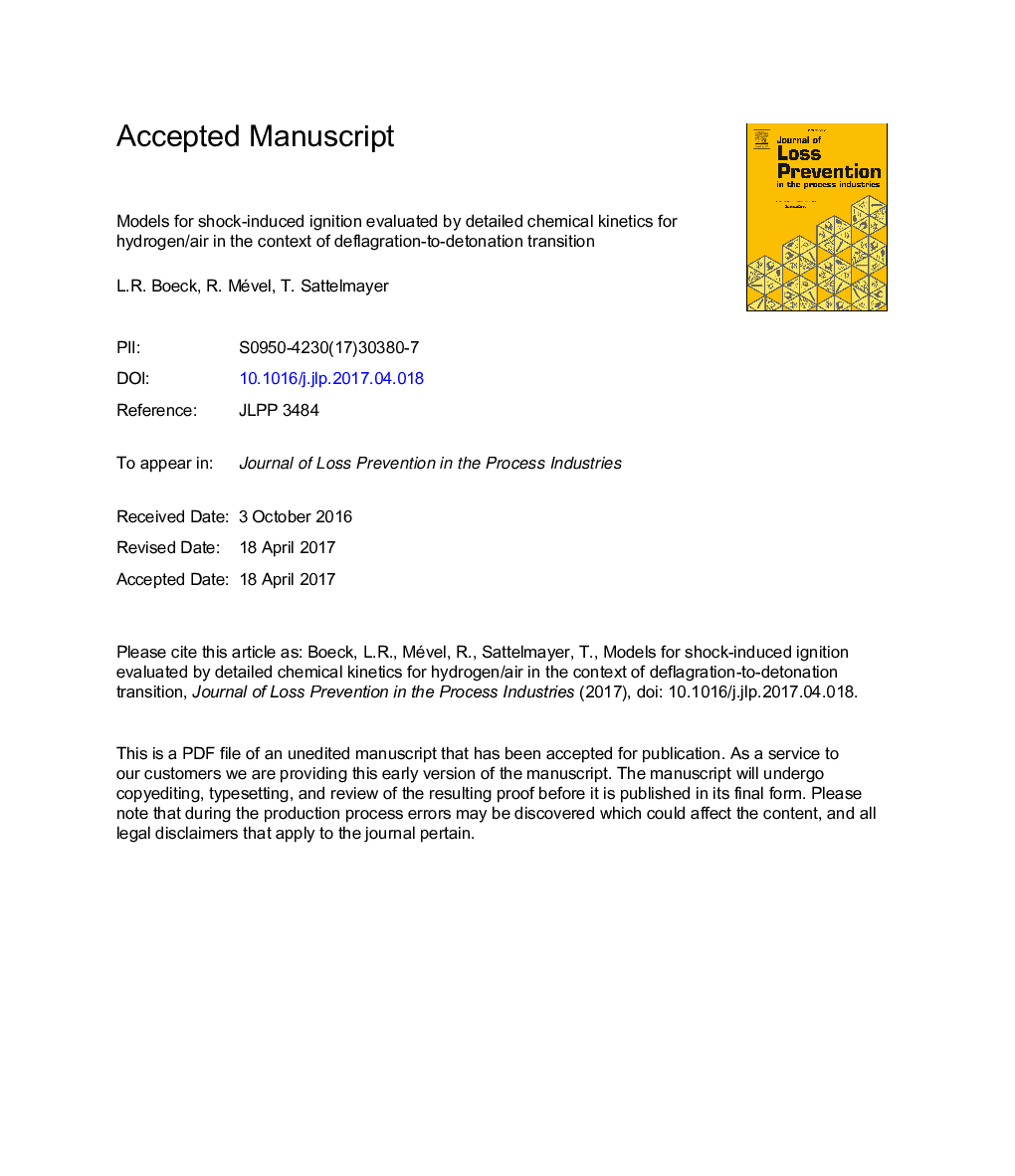| Article ID | Journal | Published Year | Pages | File Type |
|---|---|---|---|---|
| 4980271 | Journal of Loss Prevention in the Process Industries | 2017 | 18 Pages |
Abstract
Deflagration-to-detonation transition can occur in industrial explosions involving highly reactive gas mixtures such as H2/air. Large degrees of confinement and congestion support strong flame acceleration and the transition to detonation. Various mechanisms can accomplish the onset of detonation, such as mixing processes and instabilities or shock-induced ignition. This paper focuses on ignition by normal shock reflection. Two ignition modes behind reflected shock waves are distinguished: strong ignition, which enables direct detonation initiation; and weak ignition, leading to distributed ignition kernels (deflagrations). Models for the prediction of ignition modes by Voevodsky and Soloukhin, Meyer and Oppenheim, Radulescu et al., Grogan and Ihme, and Thomas et al., are evaluated and compared using a state-of-the-art detailed chemical kinetic scheme. Based on these models, critical incident shock Mach numbers leading to strong ignition are determined. Similarities and deviations between these models are discussed and strategies for future experimental work are proposed.
Related Topics
Physical Sciences and Engineering
Chemical Engineering
Chemical Health and Safety
Authors
L.R. Boeck, R. Mével, T. Sattelmayer,
